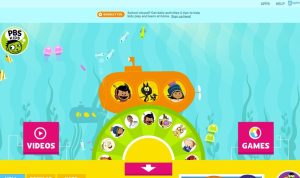How Social Learning Improves App Engagement serves as a critical exploration into the intersection of social dynamics and user interaction within applications. In an era where user retention and active participation are paramount, understanding how social learning influences behavior can transform app engagement strategies. This concept not only emphasizes the importance of community-driven experiences but also highlights the potential for users to learn from one another, enhancing their overall interaction and satisfaction with the app.
By integrating social elements into the app experience, developers can create environments that foster collaboration and shared learning. This leads to increased motivation and encourages users to engage more deeply with the content, ultimately driving better outcomes for both users and app creators. As we delve into this topic, we will explore various strategies that leverage social learning principles to boost engagement levels.
In the contemporary digital landscape, the importance of effective communication cannot be overstated. The ability to convey ideas clearly and persuasively is a skill that is increasingly becoming a prerequisite for success in various domains, including business, education, and interpersonal relationships. This article explores the critical elements of effective communication, the barriers that can impede it, and strategies to enhance communication skills.Effective communication is often defined as the transfer of information in a manner that is understood by both the sender and the receiver.
It encompasses various forms, including verbal, non-verbal, written, and visual communication. Each of these forms has distinct characteristics and functions, yet they all share the common goal of conveying a message effectively. Verbal communication is perhaps the most familiar form. It includes spoken conversations, speeches, and discussions. To be effective in verbal communication, clarity, tone, and pacing are essential.
Clarity involves using simple, straightforward language and avoiding jargon that may confuse the listener. Tone conveys emotions and intentions, while pacing ensures the message is delivered at a speed that allows for comprehension. Non-verbal communication, often referred to as body language, plays a significant role in how messages are interpreted. This includes facial expressions, gestures, posture, and eye contact. Non-verbal cues can reinforce or contradict verbal messages.
For instance, a speaker may convey enthusiasm verbally, but if their body language appears closed off or disinterested, the message may be misinterpreted. Understanding the subtle nuances of non-verbal communication can enhance interpersonal interactions and foster better relationships.Written communication is another vital component of effective communication. It includes emails, reports, articles, and other written forms. Strong written communication skills are essential in professional settings, where clarity and professionalism are paramount.
To achieve effective written communication, it is crucial to organize thoughts logically, use proper grammar and punctuation, and tailor the message to the intended audience. Additionally, the use of visuals such as graphs, charts, and images can enhance the delivery of information, making it more engaging and easier to understand.Visual communication, while less common as a standalone form, is increasingly important in our visually-oriented society.
Infographics, videos, and presentations can convey complex information quickly and efficiently. The integration of visual elements can help to capture attention and enhance retention of information. As technology advances, the tools available for visual communication continue to evolve, making it an indispensable aspect of conveying messages effectively.Despite the importance of effective communication, several barriers can hinder its success. These barriers can be categorized into physical, psychological, and cultural factors.
Physical barriers refer to environmental factors that impede communication, such as noise, distance, or inadequate technology. For instance, poor audio quality during a virtual meeting can lead to miscommunication and frustration. Psychological barriers stem from individual perceptions, attitudes, and emotions. These can include biases, stereotypes, and preconceived notions that affect how messages are received. For example, if a listener holds a bias against a speaker’s background, they may be less likely to receive the message impartially.
Additionally, emotional states such as stress or anger can cloud judgment, leading to misunderstandings.Cultural barriers arise from differences in language, values, and social norms. In an increasingly globalized world, communication across cultures is common, yet it can be fraught with challenges. For example, gestures that are considered polite in one culture may be interpreted as offensive in another. Understanding cultural differences and being sensitive to them is crucial in fostering effective cross-cultural communication.To enhance communication skills, individuals can adopt several strategies.
Active listening is one of the most effective techniques. This involves fully engaging with the speaker, demonstrating attentiveness through body language, and providing feedback. Active listening not only improves understanding but also fosters trust and respect between communicators. Another strategy is to practice empathy, which involves understanding and acknowledging the feelings and perspectives of others. By putting oneself in another person’s shoes, an individual can bridge the gap between differing viewpoints, leading to more meaningful conversations.

Empathy can also mitigate the impact of psychological barriers, as it encourages open-mindedness and reduces judgment.Additionally, individuals can improve their communication skills by seeking feedback. Constructive criticism from peers can provide valuable insights into areas for improvement. Engaging in public speaking opportunities, such as joining a local Toastmasters club or participating in community events, can also build confidence and proficiency in verbal communication.Moreover, embracing technology can enhance communication efforts.
Utilizing communication platforms, social media, and collaborative tools allows for more dynamic interactions, especially in remote environments. Understanding the nuances of written communication in digital formats, such as emails and texts, is equally important. Adapting language and tone for different digital platforms can significantly impact the effectiveness of the message.In a professional context, effective communication is closely tied to leadership.
Leaders who can communicate their vision clearly inspire their teams and foster a culture of transparency and collaboration. Leadership communication should be characterized by authenticity, clarity, and approachability. Leaders who solicit input from their teams and actively listen to their concerns demonstrate a commitment to effective communication.In educational settings, effective communication is essential for both teaching and learning. Teachers who communicate clearly and engage their students create an environment conducive to learning.
Students, in turn, must also develop their communication skills to articulate their thoughts and ideas effectively. This reciprocal relationship underscores the importance of communication in the educational process.In conclusion, effective communication is a multifaceted skill that is vital in today’s interconnected world. By understanding the various forms of communication, recognizing the barriers that can impede it, and employing strategies to enhance communication skills, individuals can improve their ability to convey messages effectively.
As we navigate the complexities of personal and professional interactions, the commitment to honing communication skills will not only enhance individual success but also foster stronger relationships and collaborations within diverse environments.





